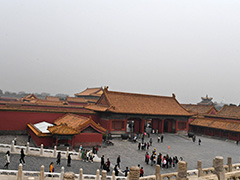Resources
A Glance at Chinese Culture Sites

General Introduction
As the only unbroken civilization in the world, the Chinese civilization has developed from its initial interpretation of the world by Ying and Yang, gone through its long course of over 5000 years of history, and grown into one of the most prominent civilizations in the world by learning from different ethnic minority groups in China and various civilizations around the world through trade. With the fast development of the Chinese economy, now Chinese cultural elements can be easily seen around the world, including Chinese philosophies, strategies, food, religion, and music. While visiting China, you can get an unmatched chance to further explore the essence of the Chinese culture in its environment by touring its numerous cultural heritage sites, sampling delicious Chinese food, experiencing colorful ethnic minority cultures, and exploring Chinese indigenous religion.
Our flower-watching tours provide a golden opportunity for you to gain a better understanding of Chinese culture besides the wonderful flowers you will see during your trip. If you have particular interests in certain facets of Chinese culture, we are more than happy to customize tours focusing on better addressing your interests and forge an unforgettable and most memorable travel experience for you in China.
Our flower-watching tours provide a golden opportunity for you to gain a better understanding of Chinese culture besides the wonderful flowers you will see during your trip. If you have particular interests in certain facets of Chinese culture, we are more than happy to customize tours focusing on better addressing your interests and forge an unforgettable and most memorable travel experience for you in China.
Some culture sites to Visit in China
 The Great Wall
The Great Wall
It is no wonder that the Great Wall is the most-famous signature that Chinese civilization has written on this planet. Built to protect the southern agricultural civilization from northern tribes, the Chinese Great Wall has more than 2000-year history and thousands of kilometers long in total. Among those remained, the Mutianyu Great Wall Section is one of the best with easy traffic reaching, good preservation, and magnificent scenery surrounding it.
The Forbidden City
The fantastic Forbidden City is China's largest and best-preserved complex of ancient buildings. So-called because it was off-limits for 500 years when it was steeped in stultifying ritual and Byzantine regal protocol, the otherworldly palace was the reclusive home to two dynasties of the imperial rule until the Republic demoted the last Qing emperor to has-been.
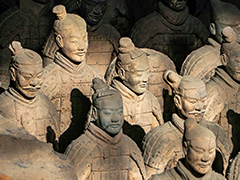 The Terracotta Warriors
The Terracotta Warriors
The Terracotta Warriors that are created to guard the massive mausoleum of Qin Shi Huang, the first emperor who united China from warring states, and also began massive construction of the Great Wall and set common standards for many aspects like measurements, language characters that had a huge influence on Chinese history. He built an army of over 8,000 clay warriors, 100 chariots, and 600 horses and none of them are the same.
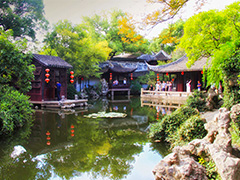 The Classical Gardens of Suzhou
The Classical Gardens of Suzhou
The classical gardens of Suzhou are a highlight for travelers coming to Suzhou of Jiangsu Province because it is the best place to understand the gardening culture in south China. Spanning a period of nearly one thousand years, from the Northern Song to the late Qing Dynasty (11th—19th century), these gardens were constructed by Chinese scholar-officials and standardized many of the key features of classical Chinese garden designs such as constructed landscapes that mimic natural scenery of rocks, hills, and rivers with strategically located pavilions and corridors.
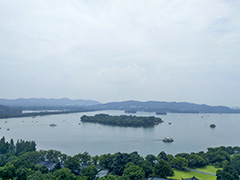 The West Lake
The West Lake
As the most famous destination in Hangzhou, West Lake maybe also the most famous lake in China with its natural beauty, delicate causeways, and romantic legends. There is a saying that West Lake gets “ Ten Scenes”, including “Spring Dawn at Sudi”, “Viewing Fish at Flower Harbor”, “Broken Bridge”, etc. And the “Broken Bridge” may be one of the busiest pedestrian bridges in China. It is the bridge where Baisuzhen met Xu Xian and started a romantic legend popular nationwide.
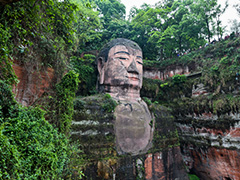 Leshan Giant Buddha
Leshan Giant Buddha
It is one of the world’s largest sitting Buddhas and oldest pre-modern structures and has become one of China’s most iconic world heritage sites. Located in the nearby city of Leshan, this cultural marvel is easily accessible by climbing the stairs to the small mountain where it is located. The height of the Buddha Statue is up to 71m and makes you wonder about how it can be built almost 1300 years ago. It reveals the profound influence brought by Buddhism in ancient China.
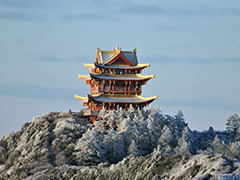 Mount Emei
Mount Emei
About 160km southwest of Chengdu, towering over the nearby Emeishan City, lies the majestic Mount Emei. Being one of the Four Sacred Buddhist Mountains of China (the others are Mount Putuo, Mount Wutai, and Mount Jiuhua), Mount Emei is one of Sichuan’s largest and most famous attractions. Listed as a UNESCO World Heritage Site, it is a wonderful place to visit if you seek for a dose of Chinese Buddhism culture and the chance to see the real fantastic natural scenery.
 Jiuzhaigou Valley
Jiuzhaigou Valley
Listed as a UNESCO World Natural Heritage, Jiuzhaigou is famous for its "Six Wonders," including the crystal water, terraced waterfalls, colorful forests, snow-capped peaks, Tibetan culture, and gem-like lakes. Water is the soul of Jiuzhaigou Valley, and numerous lakes of different sizes put Jiuzhaigou on the top of travel destinations in Asia. The lakes here are crystal clear all year round, and with the changing seasons, the color of the water shifts.
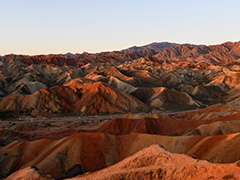 Zhangye and Danxia Landform
Zhangye and Danxia Landform
Zhangye City is located in the central part of the Hexi Corridor, and there are various natural landscapes such as deserts, hills, grassland, and primitive forest in this area. Zhangye Danxia National Geological Park is famous for its Danxia landform, in which sedimentary rocks have risen with colorful stripes and beautiful shapes. The tourist attractions in the park are divided into "Binggou Danxia" and "Qicai Danxia". Both of them are vast and magnificent especially when they are bathing in the sunlight of dawn and dusk or after rain.
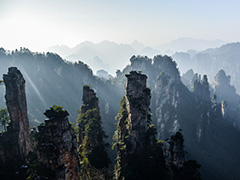 Zhangjiajie
Zhangjiajie
In the core of Zhangjiajie National Park, there are three thousand stone peaks seating in different styles with eight hundred streams trickling down the rocks. The hoodoo landform and the magnificent sandstone landscape make it be like a Chinese landscape painting and a "miniature wonderland, amplified bonsai." These landforms have become so influential for their breathtaking appearance that director James Cameron used them as inspiration for the alien world he created in his famous film, "Avatar".
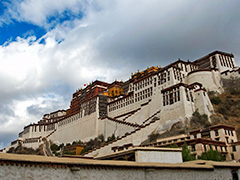 The Potala Palace
The Potala Palace
The Potala Palace is like a pearl in this snowy Tibetan Buddhism holy land. It is a magnificent plateau temple with architectural art, treasures of the legend and played an extensive and profound influence on Tibetan culture. The Potala Palace is no longer a mere palace, but a symbol of the embodiment of faith. Many believers believe that to worship the Potala palace can change the future.
